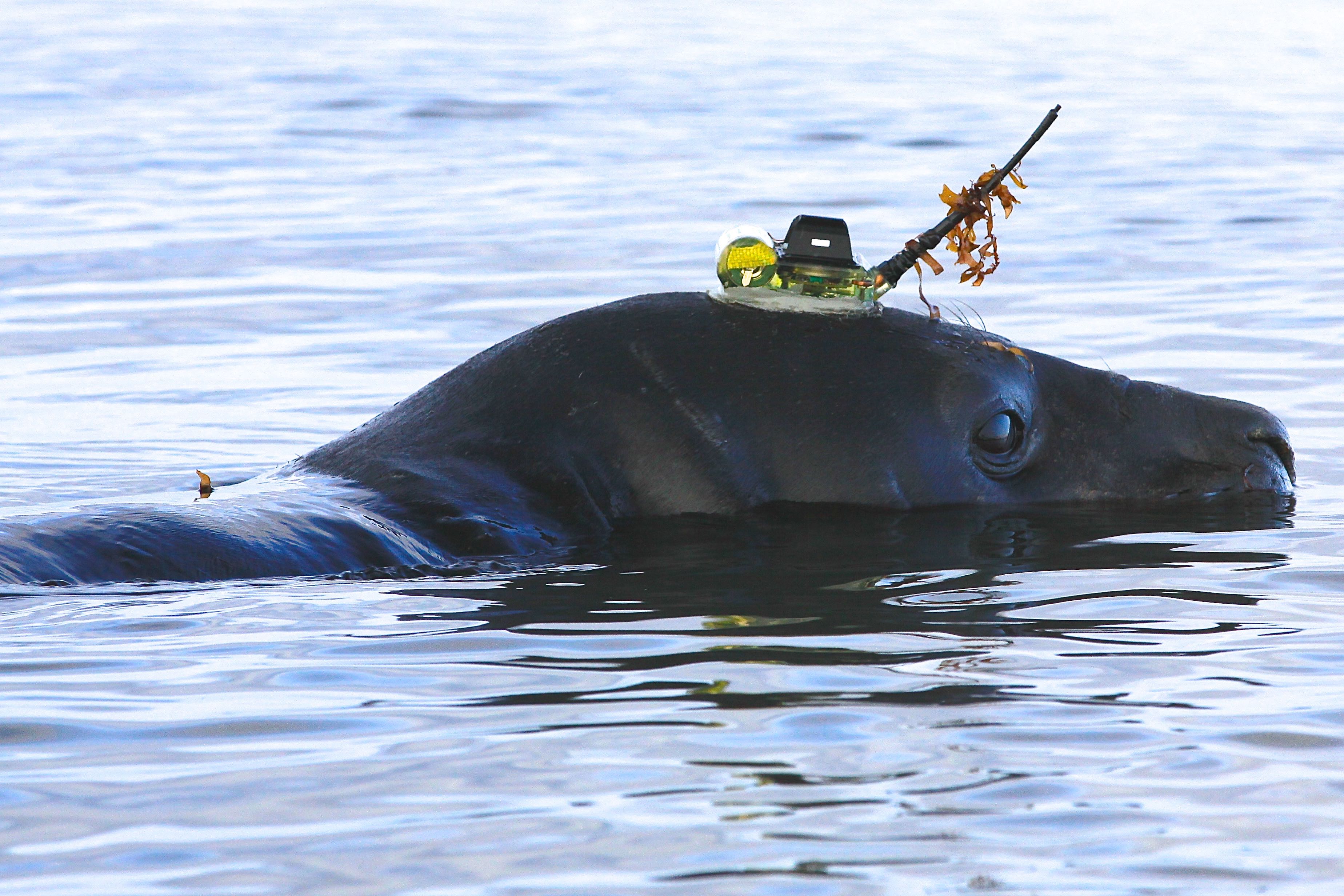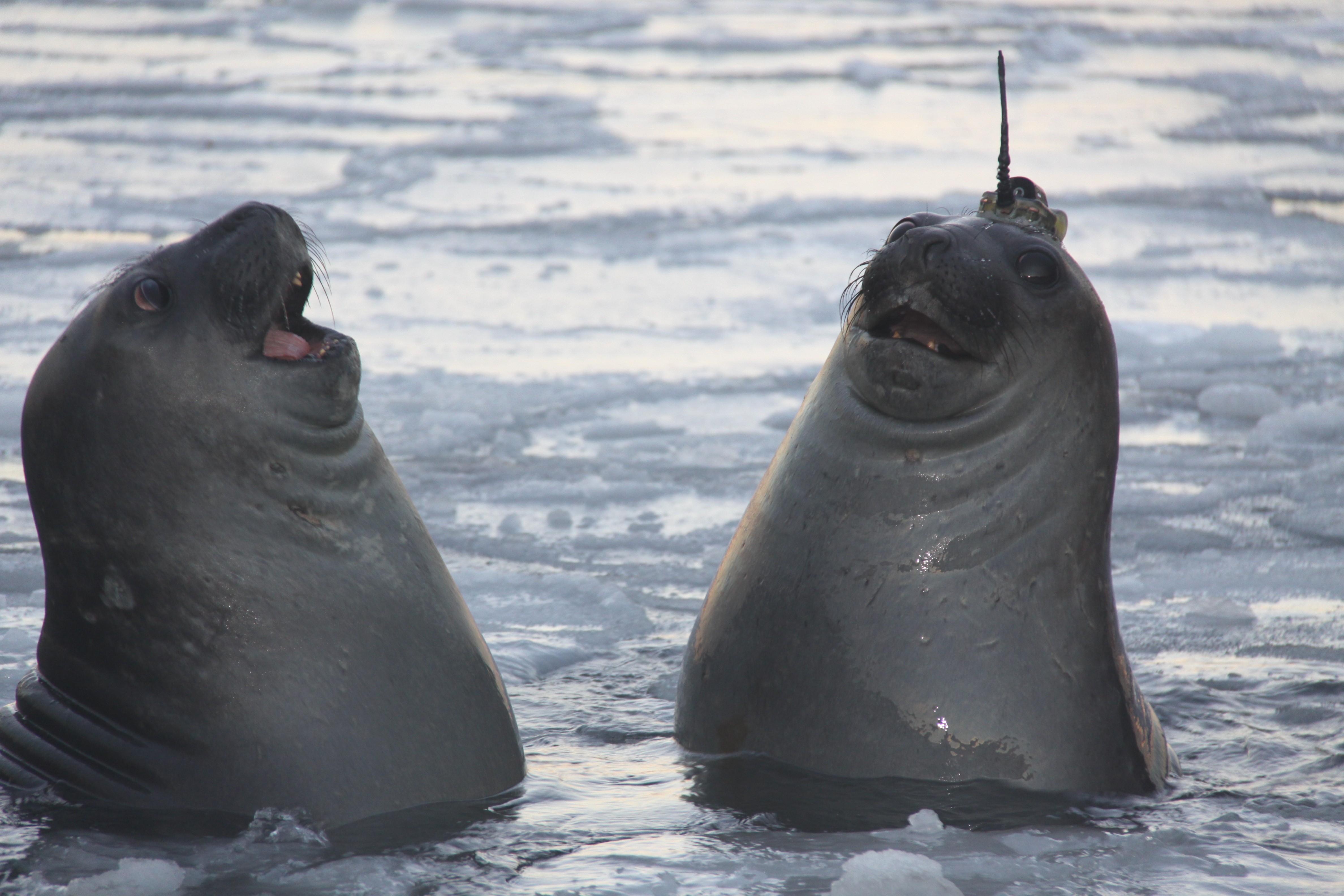
Modern tracking technology and international collaboration have given IMAS researchers and their colleagues from eight countries unprecedented new insights into the life, behaviour and distribution of southern elephant seals.
The major six-year circumpolar study tracked 287 seals from eight sites across the Southern Ocean, from Macquarie Island south of Australia to sub-Antarctic islands, such as South Georgia and the Kerguelen Islands.
Elephant seals spend more than 10-months of the year foraging at sea before returning to their breeding sites, and the researchers recorded individuals diving for up to 94-minutes to depths of 2389 metres, with the longest migration route reaching distances of 5482 kilometres.
The study, which was part of the international Polar Year Program's Marine Mammals Exploring the Oceans Pole to
Pole (MEOP), found the overall southern elephant seal population had
increased slightly to some 750 000 since the last review in 2005. But a long-term decline in the Macquarie Island elephant seal population
has continued, correlating with an increase in sea ice which prevents seals from
accessing productive foraging areas.
But a long-term decline in the Macquarie Island elephant seal population
has continued, correlating with an increase in sea ice which prevents seals from
accessing productive foraging areas.
The lead author, IMAS's Professor Mark Hindell, said the study had been enabled by the development of miniaturised, satellite-linked tracking equipment which recorded information about ocean conditions at the same time as seal behaviour.
(Photos: Clive McMahon)
"For the first time, biologists can now monitor oceanographic conditions simultaneously with animal behaviour, giving an integrated picture of the physical structure of the ocean and how it affects elephant seal activity.
"Elephant seals dive almost continuously while at sea and therefore provide valuable high-resolution information on the ocean attributes of the water column, such as temperature and salinity, wherever they travel.
"It's almost as if we had 287 mini-submarines exploring the Southern Ocean, providing new insights into remote and previously inaccessible locations while revealing where seals forage and how they respond in different environmental conditions.
"This has only been made possible by a major global research collaboration that brought together a broad data set of physical observations, including information on more than one million individual elephant seal dives in 568 000 different locations," Prof Hindell said.
Co-author Dr Clive McMahon, from the Integrated Marine Observing System (IMOS), said the data would help to inform conservation oriented management policies and actions while providing valuable information about factors which affect population trends, including the decline at Macquarie Island.
"Female southern elephant seals rely on the energy stored during their foraging trip to raise their pups, and their foraging success affects both their pup's size at birth and its survival chances in the first years of life.
"While Antarctic continental shelf waters can be regarded as prime habitat for both sexes, the study found that female seals tend to move northwards with the advance of sea ice in the late autumn or early winter.
"The breeding sites of Macquarie Island seals are further from the high-quality shelf waters and as the extent of Southern Ocean sea ice has grown they've increasingly been excluded from productive foraging areas, leading to a long-term decrease in the number of breeding seals," Dr McMahon said.
Published in the Ecological Society of America's journal Ecosphere, the paper "Circumpolar habitat use in the southern elephant seal: implications for foraging success and population trajectories" is available here.
An animation (created by IMOS's Xavier Hoenner) showing elephant seal tracking data across the Southern Ocean between 2004 and 2015 can be viewed here.
Some of the seal tags for this study are provided by Australia's Integrated Marine Observing System (IMOS) and these data are a major contributor to the MEOP international data portal. The growing time series of Southern Ocean observations that has been collected by IMOS is available via the Australian Ocean Data Network Portal.